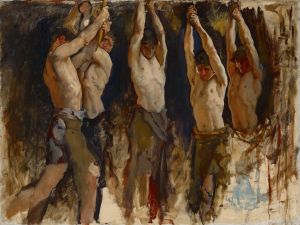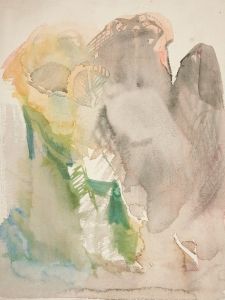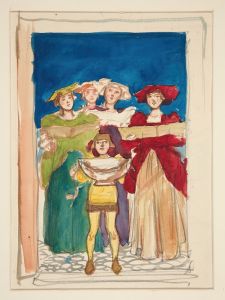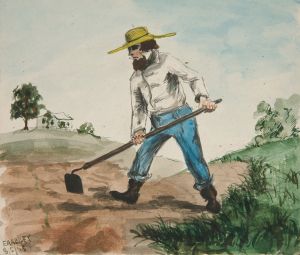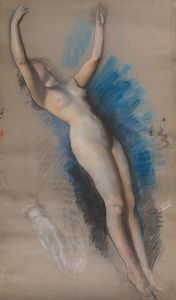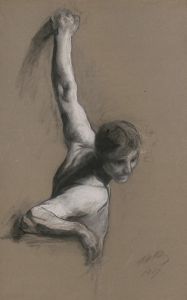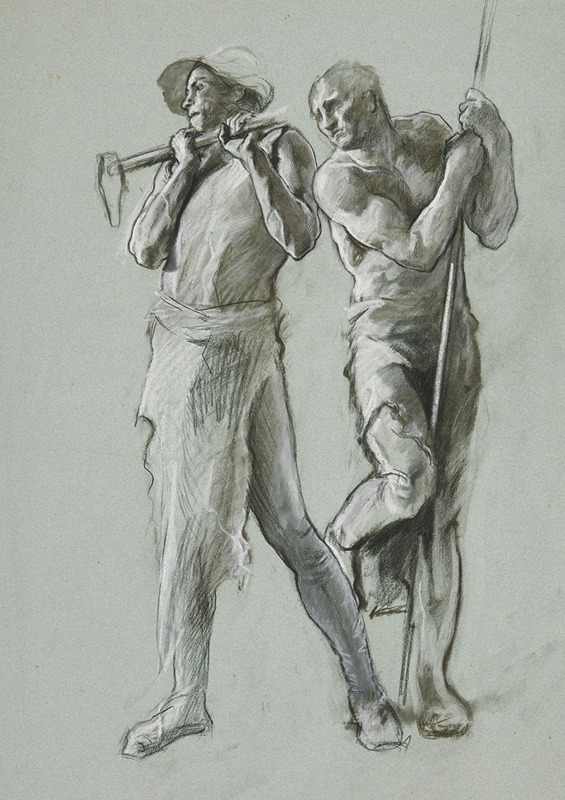
Figure study for ‘The Spirit of Vulcan, Genius of the Workers in Iron and Steel,’ lunette in the rotunda of the Pennsylvania State Capitol at Harrisburg
A hand-painted replica of Edwin Austin Abbey’s masterpiece Figure study for ‘The Spirit of Vulcan, Genius of the Workers in Iron and Steel,’ lunette in the rotunda of the Pennsylvania State Capitol at Harrisburg, meticulously crafted by professional artists to capture the true essence of the original. Each piece is created with museum-quality canvas and rare mineral pigments, carefully painted by experienced artists with delicate brushstrokes and rich, layered colors to perfectly recreate the texture of the original artwork. Unlike machine-printed reproductions, this hand-painted version brings the painting to life, infused with the artist’s emotions and skill in every stroke. Whether for personal collection or home decoration, it instantly elevates the artistic atmosphere of any space.
Edwin Austin Abbey's Figure study for ‘The Spirit of Vulcan, Genius of the Workers in Iron and Steel’ is a preparatory work for one of the lunettes in the rotunda of the Pennsylvania State Capitol in Harrisburg, Pennsylvania. Abbey, an American painter and illustrator renowned for his murals and historical works, was commissioned to create a series of murals for the Capitol building, which was completed in 1906. These murals were intended to celebrate Pennsylvania's history, industry, and cultural achievements.
The lunette titled The Spirit of Vulcan, Genius of the Workers in Iron and Steel is part of Abbey's larger mural program for the Capitol, which includes allegorical and historical themes. This particular lunette pays homage to Pennsylvania's significant role in the iron and steel industries, which were central to the state's economy and identity during the late 19th and early 20th centuries. Vulcan, the Roman god of fire and metalworking, is depicted as a symbolic figure representing the industrial labor and craftsmanship that defined the era.
The figure study serves as a preparatory work, showcasing Abbey's meticulous process in developing the composition and figures for the final mural. Such studies were a critical part of Abbey's artistic practice, allowing him to refine the poses, anatomy, and gestures of the figures before executing the full-scale mural. The study likely includes detailed renderings of individual figures or groups, emphasizing their physicality and movement, which are hallmarks of Abbey's style.
Abbey's murals in the Pennsylvania State Capitol are celebrated for their grandeur and complexity, blending allegory, history, and symbolism. However, Abbey himself did not live to see the completion of the project. He passed away in 1911, and the final installation of some of his works was overseen by other artists. Despite this, his contributions to the Capitol remain a testament to his skill and vision as a muralist.
The Figure study for ‘The Spirit of Vulcan’ is an important example of Abbey's preparatory work and provides insight into his creative process. It reflects the broader cultural and industrial themes that were central to his commission for the Pennsylvania State Capitol, highlighting the intersection of art, history, and industry during the period.






